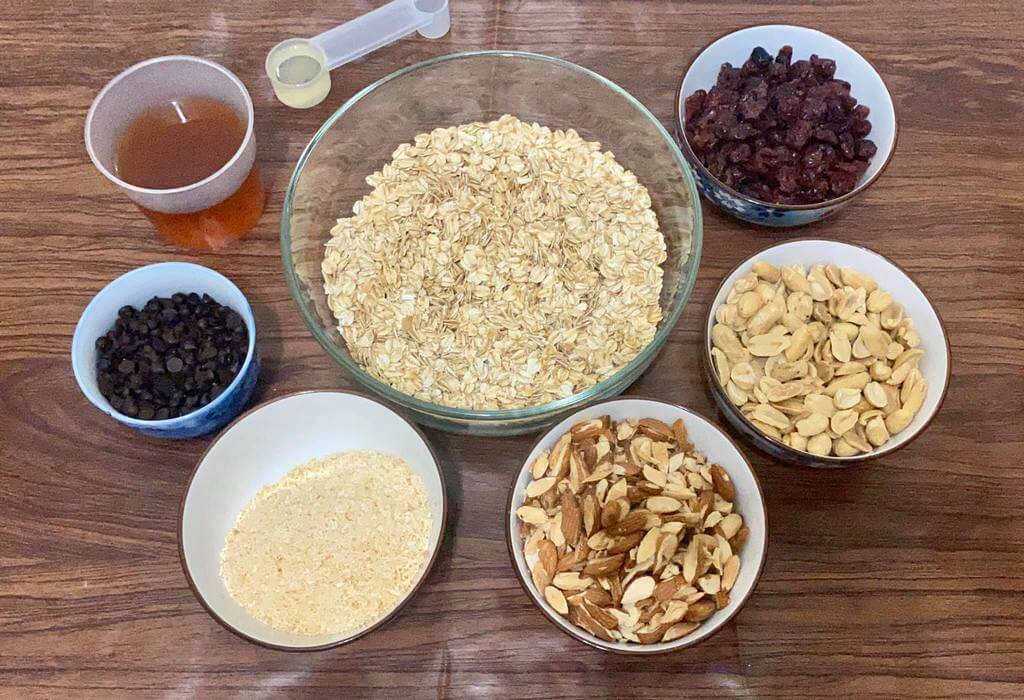-
![img]()
The Mystery Of "Cri-Du-Chat" Syndrome and Things Parents Should Know!
Diyanah Fauzi
March 15, 2021
5 min
Cri-Du-Chat means the cry of the cat in French. Have you heard of this syndrome?
Cri-Du-Chat is a rare syndrome and a genetic disorder in which a variable portion of the short arm of chromosome 5 is missing.
According to the Genetics Home Guide, it is an unusual condition found in just about 1 in 20,000 to 1 in 50,000 newborns.
Even so, it is one of the most common chromosomal deletion-induced syndromes. Photo Credit: Adobe Stock
Photo Credit: Adobe StockWhy Does It Call “Cry of the Cat” Syndrome?
It is called as "cry of the cat" syndrome because of the high-pitched cry that sounds like a cat, due to a certain condition of the child.
Due to chromosome deletion, which affects the tone of the child's cry, the larynx develops abnormally.
As a child ages, the condition is more noticeable, but it is difficult to detect past age 2.Can This Syndrome Be Life-Threatening?
Doctors also stated that there are many complexities and anomalies present in Cri-du-chat patients.
Severe organ defects, especially heart or kidney defects or other life-threatening complications that can lead to death, are born in a small percentage of infants with cri-du-chat syndrome.
In many cases, most fatal complications may occur before the child's first birthday.
However, children with cri-du-chat who reach the age of 1 will have a normal life expectancy.
But the child is most likely to have physical or developmental problems that persist for a lifetime.
The severity of the syndrome will also depend on these complications.
There are several situations in which children with cri-du-chat syndrome have been shown to develop enough vocabulary to communicate, and most of them grow up to be happy, polite, and sociable!Causes Of Cri-Du-Chat Syndrome In Children
 Photo Credit: Adobe Stock
Photo Credit: Adobe Stock
According to researchers, the exact explanation for the deletion of chromosome 5 is unclear.
Chromosome breakage happens in most cases as the parent's sperm or egg cell continues to grow and evolve.
This means that the baby experiences the syndrome when fertilisation occurs.In about 80 percent of cases, chromosome deletion is caused by the parent's sperm.
Normally, this condition is not hereditary. The National Human Genome Research Institute has found that only about 10% of cases come from a parent who has a deleted section.
It is believed that about 90% of these mutations are spontaneous.
It is unlikely that the parents would be able to carry a kind of defect called a balanced translocation. This is a chromosome mutation that does not result in the loss of genetic material.
However, if you pass the defective chromosome to your infant, it can become unbalanced. This results in a loss of genetic material and can cause cri-du-chat syndrome.
Parents must know that when you have a family history of cri-du-chat syndrome, your unborn child has a higher chance of being born with the disease.Symptoms of Cri-Du-Chat Syndrome That Can Be Found In Your Baby
 Photo Credit: Adobe Stock
Photo Credit: Adobe Stock
Doctors explained that there are a few significant symptoms that parents can detect and check if their children develop the cri-du-chat syndrome, which are:- Children born with cri-du-chat are sometimes small at birth
- May have problems with breathing at birth
- Producing a high-pitched, cat-like cry or weak cry
- Small chin
- Unusually round face
- Small bridge of their nose
- Folds of skin over their eyes
- Abnormally wide eyes (ocular or orbital hypertelorism)
- Abnormally shaped or low-set ears
- A small jaw (micrognathia)
- Partial webbing of their fingers or toes
- A single line on the palm of their hand
- An inguinal hernia (a protrusion of organs through a weak area or tear in the abdominal wall)
Other than that, kids who develop Cri-Du-Chat syndrome may also have other complications such as:- Skeletal problems such as scoliosis (abnormal curvature of the spine)
- Heart or other organ defects
- Poor muscle tone (during infancy and childhood)
- Hearing and vision difficulties
- Difficulty when speaking, walking, and feeding as they grow up
- Behavioural problems such as hyperactivity or aggression
Children with these symptoms could also suffer from serious developmental deficiencies.
However, if they do not have major organ defects or other essential medical problems, they should have a normal life expectancy.Ways and Methods of Diagnosis of Cri-Du-Chat Syndrome
 Photo Credit: Adobe Stock
Photo Credit: Adobe Stock
Based on physical abnormalities and other signs such as the usual cry, the condition is normally diagnosed at birth.
Your doctor may perform an X-ray on your child's head to detect abnormalities in the base of the skull.
In addition, the identification of small deletions is assisted by a chromosome test using a special technique called FISH analysis.
Your doctor may recommend a chromosome analysis or genetic testing if you have a family history of Cri-du-Chat while your child is still in the womb.
The doctor may either test a small sample of tissue or test a sample of amniotic fluid from outside the sac (chorionic villus sampling).Is it possible to treat Cri-Du-Chat syndrome?
There is no specific treatment for the cri-du-chat syndrome. However, there are some therapies that can help to manage the symptoms such as physical therapy, speech and motor capacity therapy, and educational intervention.
One of the most common questions by parents is can Cri-Du-Chat be preventable? The answer is, unfortunately, NO.
There is no known way to avoid cri-du-chat syndrome. Even though you do not show any signs, but you have a family history of the syndrome, there is a high possibility that you can be a carrier.
If you do, you should consider getting a genetic test. Cri-du-chat syndrome is very rare, but more than one child with this disorder is unlikely to have it.Help and Support For Parents With Cri-Du-Chat Syndrome Children
- Counselling
- Information
- Referral
- Advocacy
- Support groups
 Photo Credit: Adobe Stock
Photo Credit: Adobe Stock
I do not think it can be easy for parents who have children with this syndrome to go through a rough time. I believe that our society is still quite new to this condition, as many of us have not heard of this rare syndrome.
So, the awareness of this syndrome is still quite low.
Hopefully, this article will help to expose some important knowledge regarding children who have been diagnosed with this syndrome to parents and others.
Reference: The National Human Genome Research Institute -
![img]()
5 Educational Yet Simple Arts and Crafts For Children Under 3 Years Old
Diyanah Fauzi
March 26, 2021
5 min
Have you ran out of ideas to pull educational, yet simple arts and crafts for your kids? Don't worry, I got your back!
Well, it is not easy when you have been doing the same activity over and over again until your kids will say, “Mummy, it is getting boring!”.
Kids need new activities and art sessions in order to develop their motor skills.
Genuinely, kids get bored really quickly if they have to do the same thing! That is really normal, so how do we, as a parent, need to step up our game of crafts?
First of all, let us just understand why it is necessary for our children to learn both simple and educational crafts during their growth period.
According to a paediatrician, when the child is 3 years old, their development and growth are well established.
In fact, a 3-year-old brain can facilitate more complex cognitive and physical skills, such as jumping and hopping on one foot, riding a tricycle, walking up the stairs, completing three or four-piece puzzles, naming colours, and following simple directions.
It is important to facilitate reciprocal verbal and non-verbal exchange when performing tasks.
Parents, for example, should be able to make comments and reflections when the toddler is colouring and talking about their yellow sun, even if the chatter is nonsensical!
They may also ask open-ended questions about what they are making. Photo Credit: Adobe Stock
Photo Credit: Adobe Stock5 Advantages of Teaching Art Crafts Activities To Your Child
Improve Child’s Motor Skills
Since most activities in the arts and crafts are moving fingers and hands, these activities help to develop their fine motor skills.
Simple actions, such as holding a paintbrush and pencil colouring will help the toddlers to strengthen muscles and improve their hand/fingers control.Increase Coordination Of The Hand-Eye
Engaging in practises related to the arts and crafts from a very young age leads to an enormous improvement in hand-eye coordination.
This will help your child when spacing words or shaping letters once they enter primary school years.Ability to Appreciate Art And Culture
 Photo Credit: Adobe Stock
Photo Credit: Adobe Stock
Kids learn to value and appreciate things and pictures through the arts and crafts of cultures and periods.
Design, art and craft experience allow them to concentrate critically on their own work and the work of others.
Most importantly, over time, your child will learn to act and think, to work intelligently and creatively like the designers and artists.Learn to Express Self Through Art
Children are given the opportunity to express themselves in a constructive, tangible, and meaningful way by engaging in artistic pursuits of music as well as the arts and crafts.
They also learn to make their own artwork by using their own style and imagination.Improving Social Skills
Participating in an art class with other students offers children an opportunity to interact with others while displaying common interest.
The process of arts and crafts also enhances the bond between the parent and the child!
My kid once told me that she is really looking forward to our arts and crafts day every Sunday of the week.
Although she wants me not to do the same thing over and over again, it is nice to know that your kids appreciate your effort, and they love learning it too! Photo Credit: Adobe Stock
Photo Credit: Adobe Stock
So, now that we have understood the benefits, let us just jump into some easy yet educational art crafts that can help your three years old!5 Easy Yet Educational Arts Crafts Activities That Will Not Bore Your Kids!
Get Creative With Plasticine
 Photo Credit: Adobe Stock
Photo Credit: Adobe Stock
Have you ever heard of playdough? If you do not have that, just use the normal plasticine of any brand.
All year round, for kids, playing dough games is all about hands-on play! Children have been playing with play dough for years.
It is a great sensory tool for hands-on activities like letters, numbers and colours!
It is also a perfect muscle enhancer to get small hands ready to write. Kneading, spinning, stretching, flattening, and pounding are guaranteed to calm your children.
Personally, I will teach my children how to create an animal form and an alphabet using the plasticine.
They will be able to identify the name of the animal and even the alphabet of the ABC's through this process.Making Collages
 Photo Credit: Adobe Stock
Photo Credit: Adobe Stock
Collages not only enhance fine motor skills but also teach them the causes and effect of relationships as well as promote self-expression.
You may start by cutting paper into strips. However, please supervise this activity carefully as a 3-year-old child might be too young to use the scissors.
In a container, collect the strips, set the child-safe glue and demonstrate how to paste the objects on the wall.
Your child can develop communication skills by following your actions.
Also, when doing this activity, you can discuss and play with your children's texture, scale, shape, colour, letters, and numbers. This will surely enhance and expose them to a variety of skills!Tie-Dye Shoes
 Photo Credit: Adobe Stock
Photo Credit: Adobe Stock
Who does not fall in love with colours? I love it too!
Toddlers enjoy something that includes colours and hands-on activities.
Tie-Dye shoes craft are one of the most popular DIYs that can be done with children!
It makes children get creative and self-expressive about their personalities.
Do not worry! You will not need a lot of stuff for this activity. Just pick some white sneakers that you have, some fabric dye, gloves, paintbrush, and just dye them together!
You can allow your kids the freedom to choose whatever colours they want, and they will definitely enjoy this activity.
You can even do this activity on a plain t-shirt.Handmade Bookmark
 Photo Credit: Adobe Stock
Photo Credit: Adobe Stock
Yes, there are still bookmarks! My kids enjoy reading picture books, and one of their favourite parts is the cute and adorable bookmarks in the stationery store.
One day, I asked them, "Why not we make our own bookmarks?" and they said, "Yes!
Trust me, it is not hard to do.
First, you help your kids cut the shape of the bookmarks according to their taste - square, round, triangles, etc.
You also have to prepare any art supplies that would help them with this activity such as glitter, pencils, watercolour or markers.
Now, let them be as creative as they want to be! Once they are done with it, book a hole in the bookmarks and put a ribbon to make it extra cute!
Simple right, Mummies?Flowers Arranging
 Photo Credit: Adobe Stock
Photo Credit: Adobe Stock
Kids love to arrange flowers! You should skip this practice unless they are allergic to it.
My children never get tired of organising flowers, and I never get tired of witnessing their love of beauty and caring for their own surroundings!
To appreciate art and beauty, children need to be surrounded by it. We should point out the beauty of our everyday environment as their guides.
All you need is a vase and a selection of flowers.
You can get fresh flowers at the market near you, and the first thing you need to do is lay down any flower you have, such as roses, daisies, sunflower, baby's breath, and many more!
Next, let your kids do whatever they want (how they want to arrange the flowers).
This art and craft activity will be able to help your kids improve their decision-making skills and critical thinking!
They must be creative to place and arrange these beautiful flowers.Important Things to Remember While Doing Arts and Crafts With Kids
Remember, do not push them if they are not interested. You could try it a few times, but if they are not into it, you can always move to another activity!
Our children are distinctive and have a variety of interests.
So, from there, you may try to grasp what your children like the most. I hope that you will have a wonderful bonding time with your loved ones and that they will benefit and develop their skills through arts and craft! -
![img]()
Healthy Go-to-Snack: Homemade Granola Energy Bars for Your Family
Merryn Tan
March 11, 2021
3 min
I am a mother of two boys - the eldest is 14 years old and the youngest is 8 years old. They are very energetic and constantly on the go.
Both of them are at their happiest when they are outdoors; where they can run around and channel their energy into physical activities.
Since my eldest is in his teen years, he is always feeling hungry compared to his little brother.
I believe my eldest son is going through a major growth spurt and needs all the additional food to give him the extra energy and nutrients to help with his growth and development.
With the increase in his calorie needs, he also snacks a lot!
Both my son loves granola bars, but I find those commercially sold are a little too sweet and also very expensive.
Also, do you usually read the labels in these popular granola bars? You will be surprised to see what is hidden in these supposedly 'healthy' granola bars; usually high in sugar as fructose or corn syrup.
Therefore, in order to save money and still eat delicious yet healthy granola bars, why don't we make our own granola energy bar for the family, especially for our children?What Goes Into the Granola Bars?
Granola bars are usually made from rolled oats with honey to keep them together.
Some dry fruits and nuts are also added. These bars are considered to be a superb booster of energy.
They are also a good source of protein and fiber that keeps us fuller longer and cleans our digestive tract while improving digestion and preventing constipation.The Ingredients And The Method Of Making Granola Bars
It is easy to get the ingredients to make these energy bars and it is so simple to make.
I like to make my own granola energy bars because I can change the sugar level and add my favourite ingredients. These are the ingredients that I use. You may also add any other ingredients that would fit you and your family, such as your favourite dried fruit, to make it more enjoyable and flavourful.
These are the ingredients that I use. You may also add any other ingredients that would fit you and your family, such as your favourite dried fruit, to make it more enjoyable and flavourful.
Homemade Granola Energy Bars

A perfect and healthy breakfast snack for your family.
- 2 cups toasted rolled oats
- 1 cup roasted almond
- 1 cup roasted peanuts
- 1 cup dried cranberries
- 1/2 cup toasted desiccated coconut
- 1/2 cup dark chocolate chips
- 3/4 cup honey
- 1 tbsp oil
Toast the rolled oats, peanuts, and almonds until all turns golden and fragrant.
Toast the desiccated coconut separately.
Slice the roasted almond.
In a huge bowl, mix rolled oats, peanuts, sliced almonds, desiccated coconut, dried cranberries, dark chocolate chips, oil, and honey.
Mix until all the dry ingredients are coated with honey.
Transfer into a lined baking pan and press to flatten the ingredients.
Bake in a preheated oven at 170°C for 10 minutes.
Once you take it out of the oven, cut into bars immediately.
Press again and leave to cool before refrigerating.
Refrigerated for a minimum of 2 hours.
Remove the bars from the baking pan once firm.
Cut along the lines to separate the granola bars.
Wrap each bars with non stick baking paper and store in an airtight container.
Time To Serve!
After you finish all of the processes, you are ready to serve the granola bars to your family, especially your children.
I bet they are going to enjoy this granola energy bar as much as my son does. These convenient, healthy and tasty granola bars are ready to be eaten at any time of the day. They are in fact my sons' go-to snack. The boys will just grab one before dashing out of the house.
These convenient, healthy and tasty granola bars are ready to be eaten at any time of the day. They are in fact my sons' go-to snack. The boys will just grab one before dashing out of the house.
Granola bars are a nutritious snack. Since you make them yourself, you are in charge of exactly what goes into it.
It is not difficult to make these granola bars. So, try to make it on your own starting today!
If you are not so sure how to make these homemade granola bars, you can watch the video below.
I promise that you will not regret making these snacks and I am sure once you get started, you will continue to bake more just like I do! -
![img]()
It’s Official! Schools To Reopen In March 2021
Aimee
February 19, 2021
2 min
Today, every Malaysian household has gathered around the TV to listen to the latest announcement by Datuk Dr. Mohd. Radzi Md. Jidin, Minister of Education.
I am sure many parents are familiar with this as we were all eager to find out the exact dates of when schools will finally reopen.
And it is official! The minister has confirmed that schools will be in operation starting in March.
Preschools and primary schools will kick start their learning sessions in two phases.
Year 1 and Year 2 students will return to school on the 1st of March, while those in Year 3 until Year 6 will join the lower primary students on the 8th of March 2021.
Secondary schools in Johor, Kedah, Kelantan, and Terengganu will only be starting their physical classes on the 4th of April 2021.
And as for the rest, schools will resume on the 5th of April 2021 accordingly, while mid-term break will commence from the 26th/27th of March until the 3rd/4th of April 2021.
These dates are applicable to both public and private schools.
For students who are sitting for the Sijil Vokasional Malaysia Tahun 1 and Diploma Vokasional Malaysia Tahun 1, physical classes will begin on the 1st of March 2021.
International schools and private institutions that are registered under the MOE are also advised to reopen on the 8th of March 2021.
So, how do you feel, mummies?
Honestly, for me, I am starting to have mixed feelings about this.
Having children who are in both primary and secondary schools is learning that each of them has a different opinion on this matter amid the recent announcement.
My youngest daughters are looking forward to going back to school. They just cannot wait to meet their friends as it has been a while since they have seen each other... physically! Reading messages from parents' WhatsApp groups about the news feels like Raya is coming this March.
On the other hand, my boys who are both in boarding schools, are not keen to go back. With the luxury of them being able to have their naps in between online classes and not having to go through the 'lights off' rule at their hostels, they are definitely going to miss their PDPR online sessions.
For whichever schools your kids are in, just remember to keep on reminding them to stay safe and take good care of their health and hygiene!
Well, mummies, this is just another task to add to your to-do list for the next few weeks. GET READY! -
![img]()
It's Slime Time! Ways To DIY Slime At Your Own Home With Your Kids
Diyanah Fauzi
March 19, 2021
5 min
I bet every kid has played with slime and for sure it is addicting! Homemade slime is one of the best ideas when it comes to kids' crafts.
It is quick, fast and super cheap. Even my kids really enjoy playing with it!
This is a fun craft to do as an indoor activity. Trust me, once you get used to it, you are going to make more slime together with your kids throughout the year.
Worry not, as all the things that you need will still be under your budget. Seriously, my children have not been able to get enough of this stuff.
Things can get a bit messy when you are doing this with your kid. So I would suggest you to lay down a tablecloth so that the slime won't get on the table.
But, for those who are not familiar with slime, here is some info that I would like to share with you.Let’s Get To Know Slime!
 Photo Credit: Adobe Stock
Photo Credit: Adobe Stock
A polymer! Yes, slime is a polymer. It is a form of polymer that is broad and bendy molecules, sort of like spaghetti.
There is plenty of good polymers such as plastic cups, balloons, and even skin.
Typically, polymers do have two parts. The long, bendy polymer molecules are not very elastic, so we need to add a 'cross-linker' to create a large polymer.
As a parent, most of us always wonder whether can our children learn anything from playing with slime?
I was one of those parents too. Is playing with slime actually benefits anything to my child or it is just another distraction?
But not anymore. I got to know the benefits and I, myself love it when my child chooses to play with slime even more!
Here, I share with you some of the benefits and advantages of playing with slime for our children.5 Benefits of Playing With Slime!
1) Slime Increase Mindfulness
Slime activity encourages being in the moment. By playing with slime, it helps to distract your child from television, video games and gadgets - which is a good thing!
Also, one fun fact: The interactive sensory experience provides users with "micromomoments," or moments that carry 10% of the concentration and consciousness of an individual.2) Helps To Concentrate Better
 Photo Credit: Adobe Stock
Photo Credit: Adobe Stock
It is no secret that, for a long period of time, young children have a hard time focusing on things.
Children must learn how to pay attention, and having slime forces them to concentrate on the 'assignment'.
The formulas require attention to detail, arithmetic, and chemistry, so they should not be distracted!3) Helps To Promotes Playtime Independently
For someone who is used to being occupied all the time, one good way for them to amuse themselves for brief periods is to play with slime.
Independent playtime is important because it helps with long-term self-confidence and concentration, and just the kind of activity that will keep them interested is, by playing with slime!4) Develop Higher Motor Skills
Slime is a sensory toy and it can assist with fine motor skills. It needs the use of the hands and eyes of the child to participate in this game.
It is readily adaptable and a fun and creative way to get kids to exercise endurance, fine motor control, and flexibility.
Fluffy slime, glitter slime, and crunchy slime are the best ones for that.5) Sense of Relaxation
 Photo Credit: Adobe Stock
Photo Credit: Adobe Stock
The biggest advantage of playing with slime is that it is relaxing. Even for adults, it is really calming to take the time to keep the icky, gooey stuff in your hands and play with it.
It will decrease levels of stress and place you in a better mood. If you work with a young person who is anxious, it might be a perfect portable option to provide them with slime.
Despite all of the benefits, many parents still worried about their child’s health. Is slime dangerous to children?
The answer is NO. However, I suggest that when playing with slime, young children should always be supervised and stored somewhere safe where they cannot easily get it.
The small amount of Borax in slime is not likely to cause discomfort for most individuals, but when I finish playing, I still wash my hands and children's hands, just in case!Types of Slime That Are Fun and Playable!
 Photo Credit: Adobe Stock
Photo Credit: Adobe Stock- Fluffy slime
- Glitter slime
- Sand slime
What Time Is It? It’s DIY Slime Time With Easy Tips and Tricks!
 Photo Credit: Adobe Stock
Photo Credit: Adobe Stock
My kids discovered slime on YouTube videos. There are many videos that did awesome DIY slime with attractive and unique colours!
Trust me, they were obsessed with it! Surprisingly, their friends were also very much obsessed with slime and it comes in different textures too.
Until one day, my children begged me to buy the slime, and being a typical Asian mum, I thought that it was pretty expensive.
So why buy it when we can spend (more quality) time together and do a DIY slime? So, grab your kids and let’s start making homemade slime!Ingredients To Make Slime:
- 1/2 Cup of Clear PVA School Glue (Elmer’s works best)
- 1/2 Cup of Water
- 1-2 tablespoon of Saline Solution
- 1/4- 1/2 teaspoon of Baking Soda (more for white glue and less for clear glue)
- Glitter and Food Coloring
- Fun Mix-ins (like glitters!)
Follow This Method:
- First, you must add glue and food colouring into a bowl. Then, squeeze the bottle of glue into the bowl.
- Add your food colouring with any colour that you want and stir until combined! Then, don’t forget to add some baking soda to the mixture.
 Photo Credit: Adobe Stock
Photo Credit: Adobe Stock- Third step: Mix in the saline solution. Later, you must add 1 1/2 Tablespoons saline solution and mix until combined! If it gets too sticky, add 1/2 Tablespoon of solution at a time. Remember, the more you add, the thicker and slimier it will be.
 Photo Credit: Adobe Stock
Photo Credit: Adobe Stock- Fourthly, you need to knead the slime. Using your hands, knead the slime until it holds together. It will be wet and gooey at first, but just keep kneading until it all comes together!
- Lastly, enjoy your slime! Simple right?
 Photo Credit: Adobe Stock
Photo Credit: Adobe Stock
Reminder: When your child is not playing with the slime, store it in a container with a lid or in a ziplock bag. And, it is best to play slime on a placemat!Last Note on Homemade Slime With Your Kids
It is definitely fun to do, especially with your children. They will be able to learn something new and most importantly, strengthen your bond as a family.
Well, family time matters! Kids love to spend quality time with their mums.
Just make sure that all of the steps are carefully done under your supervision. Have fun with your slime and for more homemade slime recipes, check out this video!
https://www.youtube.com/watch?v=q9B3bsUDoRo
Resource: Slime Homemade Recipe
Navigation
Our menu boxes are very flexible and easy to use




